The Art of Making Com (Young Sticky Rice) in Ha Noi: Tradition & Taste
Renowned for its gastronomic treasures as much as its historic temples and busy streets, Ha Noi is Vietnam’s cultural center. Among these pleasures is Com (young sticky rice), a beloved fall delicacy that represents craftsmanship, patience, and tradition more than just cuisine. Let MOTOGO Tours explore.
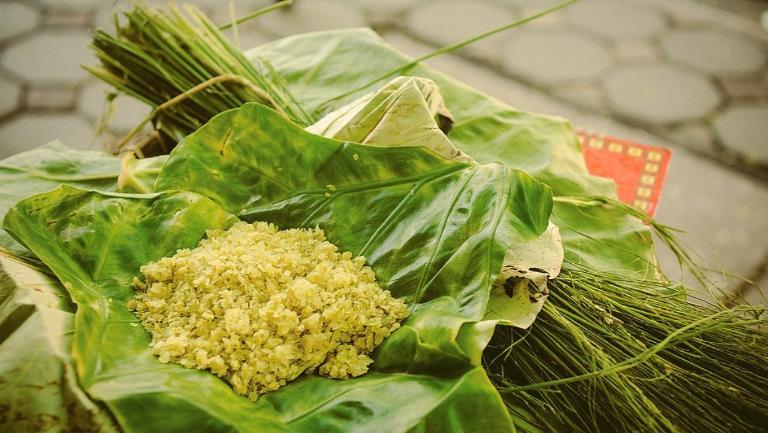
Introduction to Com (young sticky rice)
What is Com (young sticky rice) ?
Harvested from young, tender grains still green, com (young sticky rice) is a variety of young rice. Unlike completely ripe rice, the young grains have a chewy texture and a subdued sweetness that is both soothing and reviving. After roasting, pounding, and sifting the rice to discard the husk, soft, flat grains of vivid green remain. Traditionally wrapped in lotus leaves, Com smells strongly and is as much a component of the experience as the flavor itself.
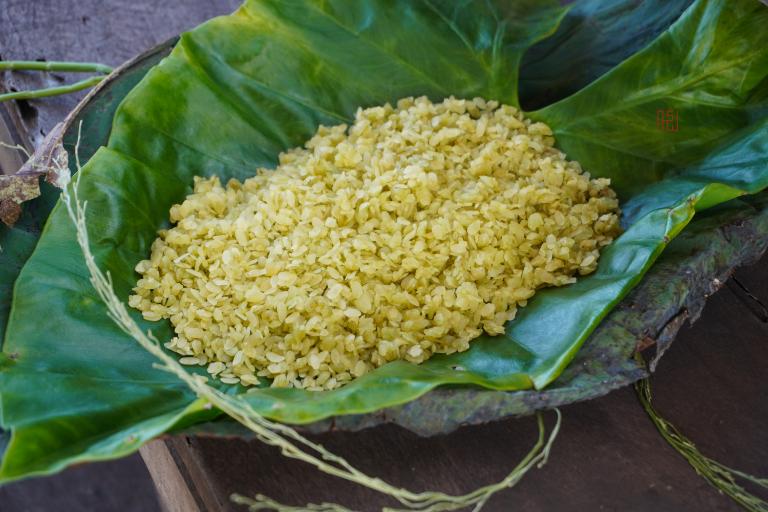
The Cultural Significance of Com in Hanoi
Com (young sticky rice) is a cultural emblem of Hanoi not only a food. It has been savored for millennia throughout the autumn harvest season, especially in towns like Vong where the Com-making customs began. Com’s creation and distribution mirror community’s values of thanks for the abundance of nature. Usually presented during worship, it represents purity and the link between people and the ground.

The Ingredients of Com
The Special Type of Sticky Rice Used
Not every kind of sticky rice can be used for Com. The rice has to be fresh, green, and picked at exactly the correct time—while the grains are still milky and delicate. Correct taste and texture depend on this exact moment. Most Ha Noi artists get their sticky rice from the rich Red River Delta, where the best grains are produced by the soil conditions and temperature.

The Role of Green Rice in Com-Making
The key component in creating Com is green rice, sometimes referred to as “nep cai hoa vang.” Roasted this species of rice has a deep, nutty taste and a unique pale green hue. Com is best eaten during the autumn harvest season, when the rice is at its best as its freshness is what gives it its special taste and scent.
>>> Let’s see more: Top 10+ Must-try Dishes in Hanoi: A Guide to Ha Noi’s Best Food
The Traditional Process of Making Com
Harvesting the Young Sticky Rice
Making Com starts with gathering young sticky rice while the grains remain in their milky form. The time is crucial since choosing the rice either too early or too late could change its taste and texture. The rice is husked right away upon harvesting to stop it from hardening.
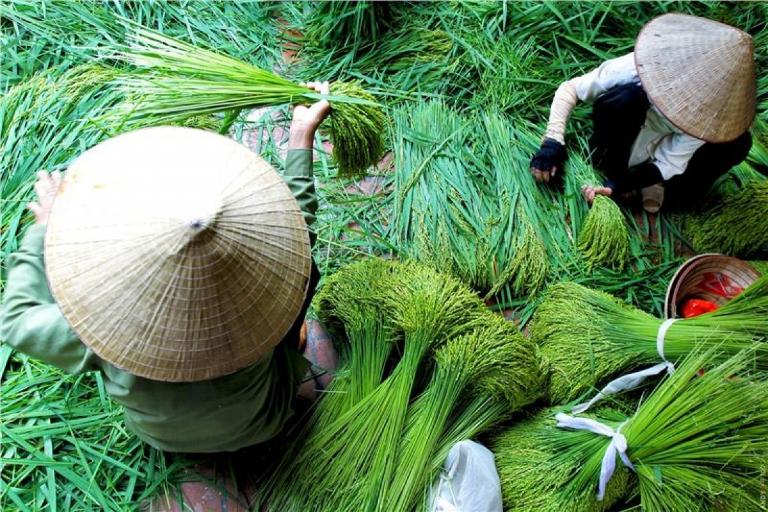
Roasting the Grains to Perfection
The young rice is husked then cooked in huge pots on low heat. The rice must be stirred constantly to guarantee even roasting, hence this stage calls for continuous attention. The rice grains are to be dried without burning them so as to maintain their delicate taste.
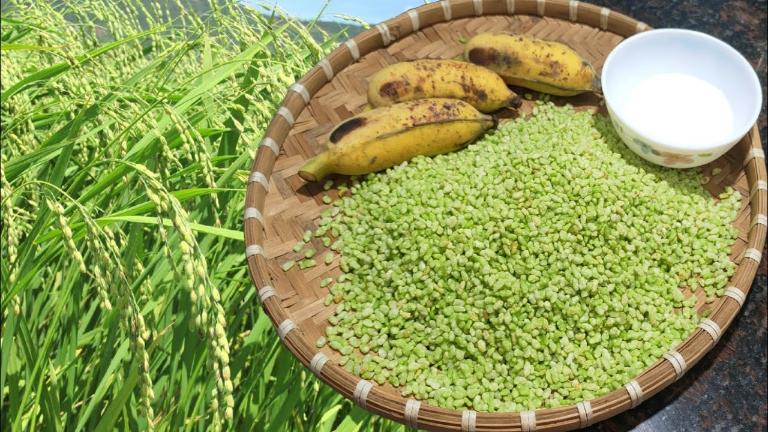
Sieving and Winnowing: Separating the Husk from the Grain
The rice is sieved bamboo style once roasted to separate the husks from the grains. This classic method is still applied today since it guarantees just the best grains remain by allowing precise control over the rice’s texture. The delicate husk removal technique usually calls for numerous rounds of sieve-through to get the ideal outcome.

Cooling and Pressing the Grains
The rice grains cool after sieving and then are pressed to flatten them. Com’s unusual flat form comes from this pressing. Fresh lotus leaves, which give the grains a faint scent, then cover them. Although the work is labor-intensive, Com is a real handmade product since it has distinctive taste and texture from the technique.
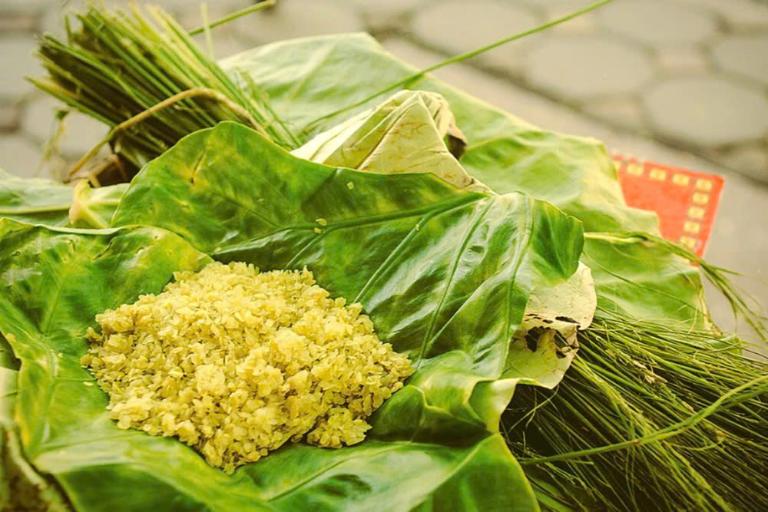
Popular Dishes Made with Com (young sticky rice)
To enhance your cuisine experience, guided tours are available like Hanoi Food Tour of Motorbike Tours, providing popular dishes made with Com.
Com Xao (Fried Com)
Popular cuisine Com Xao, or fried young sticky rice, highlights Com’s adaptability. It’s created by sweet, chewy stir-frying the delicate rice grains with sugar and occasionally coconut milk. The fried method gives the rice a somewhat caramelized taste and improves its inherent nuttiness.
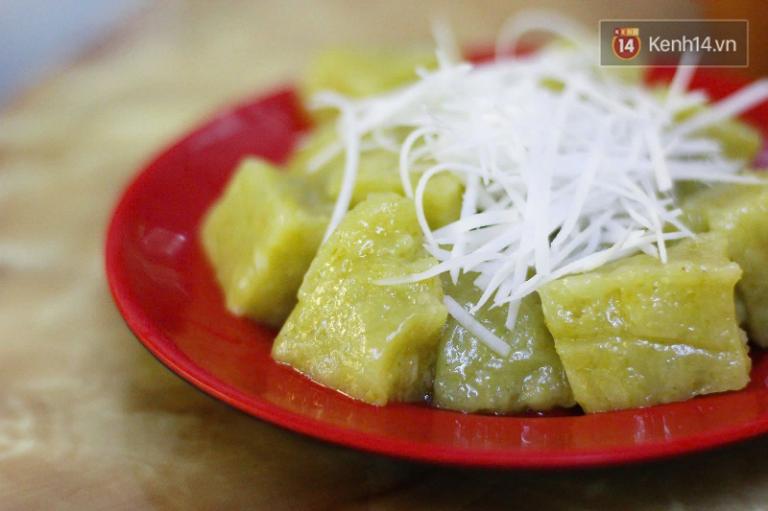
Served warm, Com Xao is a beloved Vietnamese dessert and a consoling snack especially eaten in October when Com is in season. Usually sprinkled with shredded coconut or toasted sesame seeds, the dish gives every mouthful layers of taste and texture. Com Xao is a great way to enjoy the special properties of young sticky rice whether consumed with traditional Vietnamese tea or on its own.
Che Com (Com Sweet Soup)
Traditionally Vietnamese, Che Com blends Com with the creamy smoothness of coconut milk. Usually created by boiling the Com grains in sweetened coconut milk until the rice absorbs the liquid and softens, this reviving treat Mung beans are occasionally used into the recipe to provide a somewhat earthy taste that offsets the coconut milk’s sweetness.
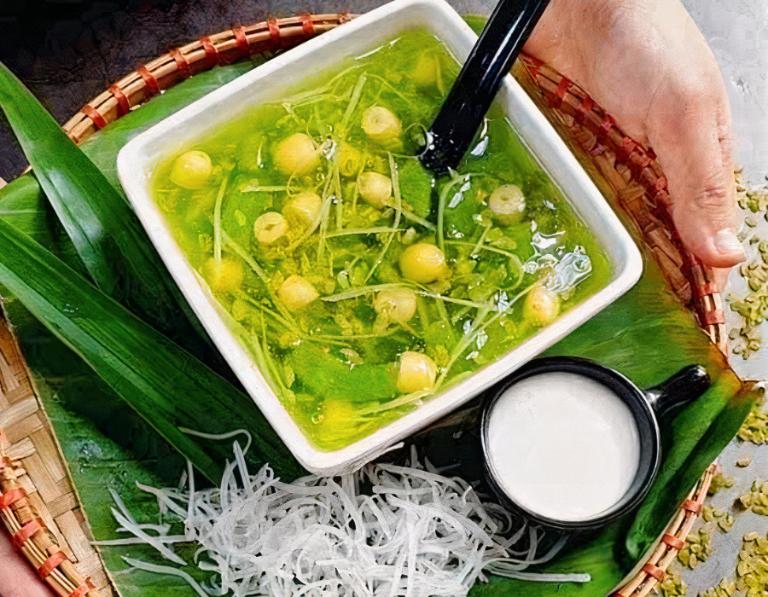
The season dictates whether the food is presented warm or cold. Che Com is a great way to cool and garnish summertime heat since it is generally cooled and topped with crushed ice. People keep returning for more because of the great contrast the soft, chewy texture of the Com makes with the thick, creamy coconut.
Banh Com (Com Cake)
Often connected with special events and weddings, Banh Com is maybe the most famous meal prepared using Com. Combining Com with sugar and mung bean paste creates a soft, chewy outside with a sweet, aromatic inside for this delicate green cake.
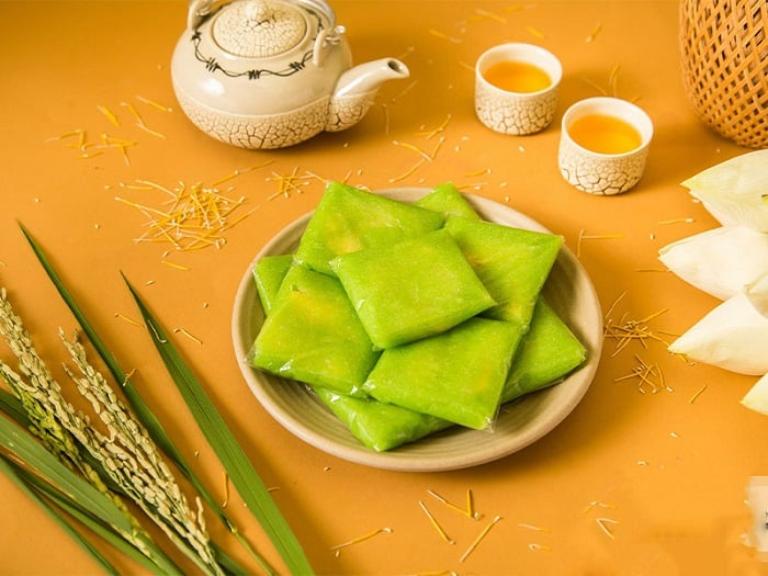
Green banana leaves wrap Banh Com, imparting scent and giving the dessert its distinct look. Often symbolizing purity, love, and faithfulness, the cake is a favorite gift at events and marriages in Vietnamese culture. It’s a great treat as well as a reminder of the long-standing customs connected with Com in Vietnamese society.
Cha Com (Grilled Pork with Com)
A delicious delicacy called Cha Com gives young sticky rice fresh perspective on usage. Com is combined in this meal with ground pork, seasoned with fish sauce, garlic, and other spices, then formed into patties or rolls. Perfect grilling produces a crispy, somewhat browned outside while the inside stays moist and tasty. The Com grains give the meal a distinctive texture and a little chewiness that balances the delicate meat on every mouthful.

Usually presented with fresh herbs, rice noodles, and a dipping sauce, Cha Com is a favorite dish in classic Vietnamese cuisine. This delicious application of Com emphasizes both its adaptability and the inventiveness of Vietnamese cuisine.
Where to Buy Com (young sticky rice) in Hanoi
Famous Villages Specializing in Com
Authentic Com is best bought from the village of Vong, on the outskirts of Hanoi. Com has been made in this village for more than a thousand years; its people are regarded as masters of their trade. Both visitors and residents swarm Vong village every autumn to buy fresh Com, which is usually sold wrapped in lotus leaves for a really authentic experience.
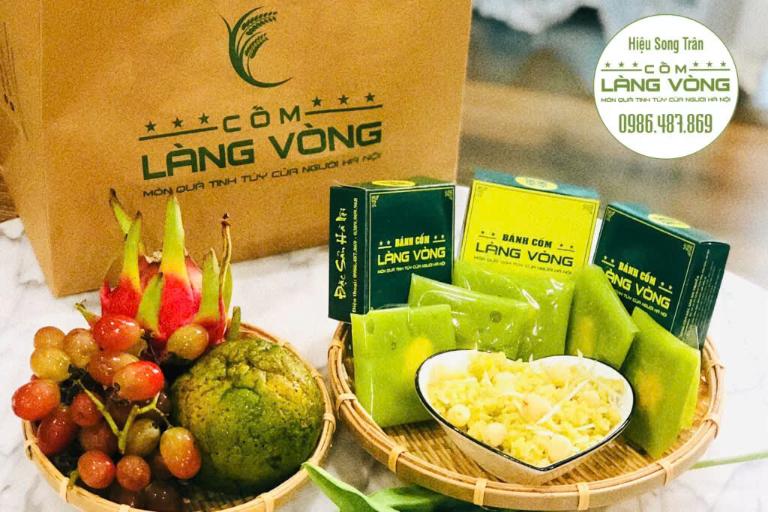
Best Markets and Shops for Authentic Com
Apart from Vong village, Com is visible in other markets and stores all around Ha Noi. Popular places where you may find premium Com items including Banh Com and Che Com are Dong Xuan Market and Hang Than Street. For decades, several stores in these neighborhoods have been offering Com, thereby guaranteeing that you experience real Hanoi legacy.
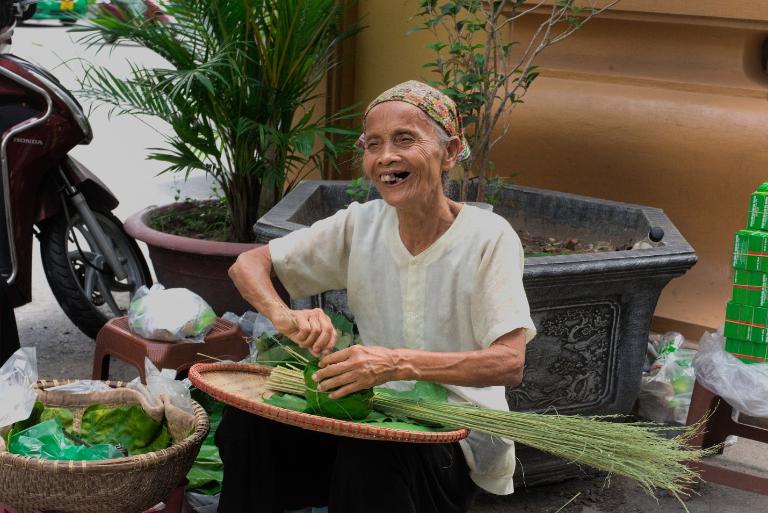
Best Time to Experience Com-Making in Hanoi
Harvest Season for Young Sticky Rice
Experience Com in Hanoi best in the autumn, between September and November. This is the time the young sticky rice is picked, and fresh Com floods the markets. It’s the ideal time to enjoy this famous snack since the air is crisp and the sights and sounds of the harvest season abound in the city.
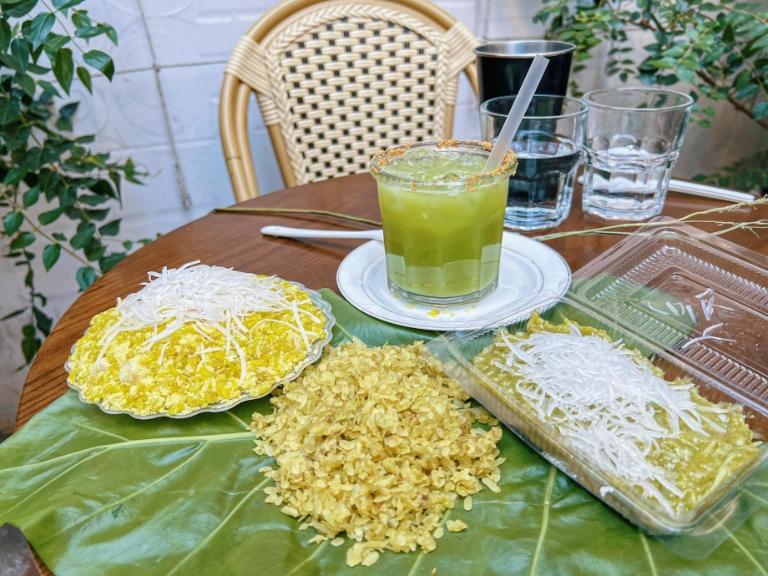
Cultural Festivals Celebrating Com
In the fall, Hanoi holds various cultural celebrations where Com takes the stage. The most well-known of them is the Vong Village Com Festival, when guests may observe the Com-making process, taste several Com-based foods, and even attempt pounding and roasting the rice. These celebrations are an excellent means of fully engaging oneself in the Com-making in Hanoi customs and legacy.
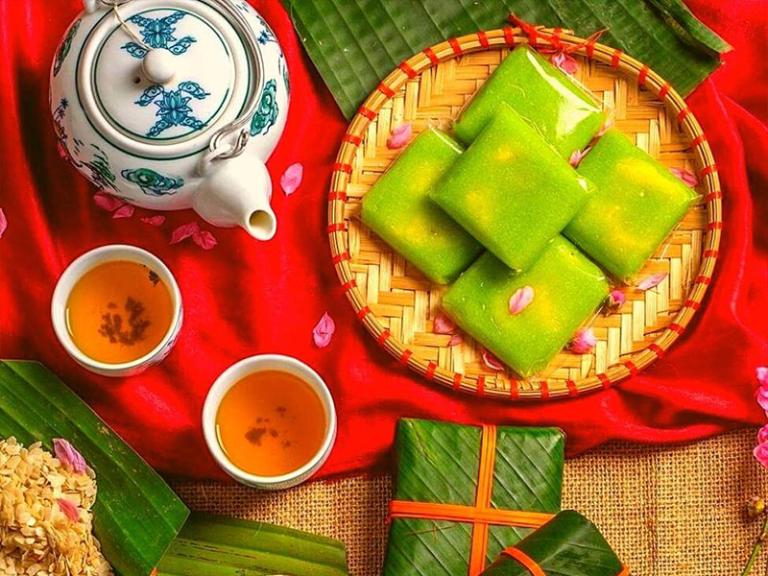
Making Com in Hanoi is a wonderful fusion of ethnic pride, workmanship, and history. Harvested at the ideal moment, this delicate young sticky rice captures the care and patience of generations of craftspeople. Every mouthful of Com Xao, Banh Com, or just fresh grains wrapped in lotus leaves connects you to Hanoi’s rich past.
Related Posts:
- Cha Ca: Turmeric-Marinated Fish with Dill and Noodles – A Hanoi Delicacy
- Pho (Vietnamese Noodle Soup): A Flavorful Journey Through Vietnamese Cuisine
- Bun Cha: Hanoi’s Grilled Pork with Vermicelli Noodles – A Must-Try Dish
- Explore the Best Hanoi Bread | A Guide to Vietnam’s Iconic Sandwich
- Exploring the World of Spring Rolls in Ha Noi: A Flavorful Journey







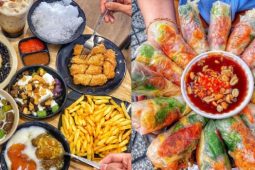
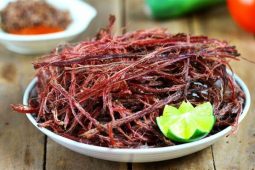
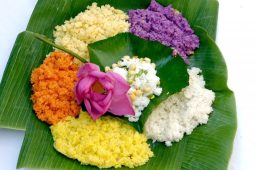
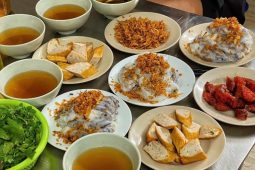
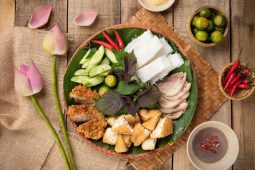
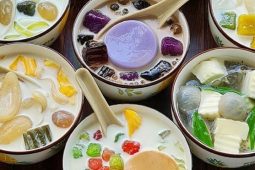
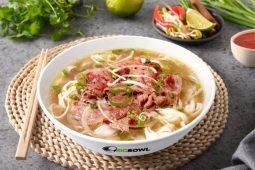
Be the first to comment!